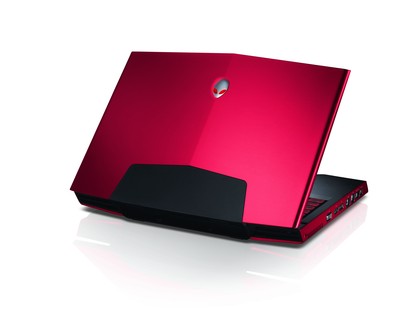3D gaming: what the future holds
How 3D games might shape up over the next decade
Still, Taylor is the first to accept that we're not quite there yet, arguing that there still needs to be a stronger penetration of 3D televisions in the marketplace, improved standards adoption between the various proprietary 3D technologies on offer and, most importantly, the current availability of quality 3D games.
"Some of the ones that we've seen have been fantastic," Taylor enthuses. "But again, they still occupy a niche role in the market. Money and resources in game studios are still flowing to mainstream 'tent-pole' games and with most gamers unequipped with a 3D-enabled TV, or otherwise not willing to wear cumbersome glasses once the novelty wears off, games publishers are going to be hesitant to throw the budgets into developing the 3D aspect."
3D graphics tech from Nvidia and AMD
Back in that place where most new hardcore gaming developments take shape, the PC gaming market, Dell's gaming subsidiary Alienware recently launched its first 3D gaming laptop, the M17X, with the company's manager for EMEA, Eoin Leyden, explaining the company's 3D strategy to TechRadar:
"In terms of the technology, Alienware is pretty much vendor agnostic when it comes to the specific technologies. So, for example, we don't necessarily have any preference for Nvidia over AMD when it comes to graphics. All we are about is trying to deliver the technology that people want.
"At the moment, on the 3D side, Nvidia has somewhat of a head start. AMD's solution right now is a little bit more complicated as it requires some middleware, which doesn't make it an ideal thing for us to offer directly. This is why all the 3D offerings in our portfolio are Nvidia-based, because that's just the way the market is at the moment.

ALIENWARE M17X: A powerful beast of a 3D gaming laptop
Get daily insight, inspiration and deals in your inbox
Sign up for breaking news, reviews, opinion, top tech deals, and more.
"In terms of demand, we have only just recently launched our first 17-inch 3D laptop and the uptake is pretty strong. However, remember that not all 3D monitors are being used by PC gamers for 3D content. Many of them are more interested in the fact that it is a 120Hz monitor, so you can get 120 frames per second - and for serious hardcore gamers and competitive players, it is ALL about frame-rate."
The Alienware exec thinks that most high-end monitors will all soon be 3D enabled, and that "the number of 3D capable PC systems is going to explode, but whether or not people actually use them for 3D content is a different thing altogether.
"The biggest challenge in all of this is that nobody likes to see competing technologies holding back adoption rates, as people are afraid to invest in hardware that might become obsolete very quickly. So that's the biggest negative to what's going on. Right now you have polarisation or you have active shutter, and they pretty much net out to the same thing, in terms of the experience."

CRYSIS 2: But will we look back and laugh in 10 years?
So far, it seems that 3D PC gaming has not had the same amount of media coverage in 2011 compared with the initial wave of hype and excitement back in 2009 and 2010.
"The nub of this whole conversation about 3D gaming is about content," says Leyden. "Games are effectively created in 3D. Yet, historically, the last step developers do is to then go and render that on a flat 2D surface, which is quite a bizarre way of doing things, really!
"However, that said, he problem with the current approach to creating a 3D effect by games developers is that it still tends to render the 3D into the screen. So the 3D effect goes into the screen as opposed to popping out of the screen at you."
